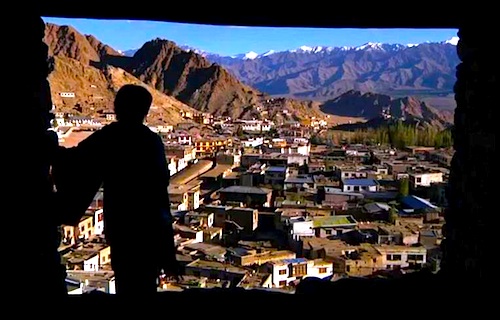By Joe Bendel. It is the story of one father, two families, and Two Chinas. Learning of the family her late Nationalist general father abandoned to the abuse and oppression of Maoist China, artist Lily Yeh would return in his stead, hoping to make peace with the spirit of his first wife. Her emotional journey is documented in Glenn Holstein & son Daniel Traub’s The Barefoot Artist, which opens this Friday in New York.
Raised in Taiwan, Yeh came to America as an art student, married a man named Traub, and became an American citizen. Eventually, her entire family naturalized, at least those that she knew of. As her father’s health started to fail, he became wracked with remorse over the fate of the wife he divorced to marry her socially connected mother.
Yeh does indeed learn being the ex-wife, daughter, and sons of an absconded KMT officer was agonizingly difficult during the Cultural Revolution. Yet, somehow his first wife bore her fate with dignity. Yeh will experience some heavy personal drama, but it is not clear whether she picks up on the wider lesson regarding the danger of rampant ideology coupled with unchecked state power.
Clearly, the most potent sequences in Barefoot follow Yeh’s humbling trip to China, but the film also spends considerable time watching her work. Essentially, her program is bringing public art to distressed places. Where we might think the downtrodden of the world are most in need of food or constitutional guarantees of the freedoms of expression and worship, Yeh would suggest what they could really use is a little color.

Based on the film’s footage, her prescription seems to be most effective in place like the Rwandan survivors’ community, where her projects become part of a wider effort to bear witness and memorialize lost ones. Wisely, Holstein & Traub only mention the so-called “Palestinian” so-called “refugee camp” she spruced up in passing, thereby avoiding inconvenient questions like just what would happen if an openly gay or non-Muslim resident tried to participate in the project.
Ultimately, the two sides of Barefoot are so fundamentally unequal, it is impossible to balance them. In China, we see up-close-and-personal how micro choices and macro events in tandem can lead to profound suffering. Yet, in a way, her public art literally white-washes over the resulting legacies of pain. Essentially, Barefoot Artist is half of a good documentary that never really becomes fully self-aware. For Yeh’s admirers and those fascinated by her family’s story, The Barefoot Artist opens this Friday (12/5) in New York, at the IFC Center.
LFM GRADE: B-
Posted on December 2nd, 2014 at 1:00pm.